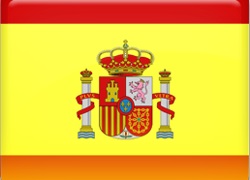Thieves stole eight priceless royal jewels from the Louvre on Sunday using a lift truck to access the Apollo Gallery. Authorities believe it was an organized crime operation and have launched a major investigation. The heist has triggered national outrage and criticism of museum security. President Macron promised to recover the stolen items.
France: Louvre on Lockdown After Daring Jewel Robbery


With the nation still reeling from news of a brazen Sunday morning heist in which French authorities say thieves made off with some of the country's most precious historical jewels, the Louvre, the world's most-visited museum, remains closed on Monday.
Police and investigators are at the scene conducting forensic operations in hopes of identifying the perpetrators and recovering the stolen items. Authorities have assigned 60 investigators to the case, working under the assumption that the robbery was meticulously planned and executed by an organized crime group.
In their rush to flee from museum staff, the thieves abandoned numerous tools and pieces of equipment, which investigators believe may offer crucial clues to their identities.
The Louvre’s official website and X account both announced that the museum would remain closed on Monday “for exceptional reasons.”
According to initial findings, the thieves used a truck equipped with a cherry picker lift to gain access to the Apollo Gallery. This historic room, constructed by Louis XIV in 1661 as a model for Versailles' Hall of Mirrors, was where the heist took place. Armed with angle cutters and other tools, the thieves broke open display cases containing the jewels, even as visitors were beginning to enter the museum following its morning opening.
The theft included eight historically significant royal jewels of "inestimable value," some dating back to the era of Napoleon. Among the items was the crown of Empress Eugenie, which was reportedly dropped and damaged during the thieves' escape. The incident has sparked public outrage and serious questions about museum security.
On Monday, Justice Minister Gerald Darmanin acknowledged broader issues with protecting national treasures. He stated that France, and particularly Paris, has many museums filled with priceless objects, and conceded that the current security measures had failed. “What is certain is that we have failed, since people were able to park a lift truck in the middle of Paris, get people up it in several minutes to grab priceless jewels, and give France a terrible image,” he said.
This latest incident is only the most dramatic in a recent spate of museum robberies across France. Interior Minister Laurent Nunez described museum security as “a major weak spot.” Last month, thieves stole approximately $700,000 worth of gold from Paris’ Museum of Natural History. In Limoges, two porcelain dishes and a vase valued at $7.6 million were also stolen in a separate case.
The Louvre has not experienced a theft of this magnitude since 1998, when Camille Corot’s 19th-century oil painting Le Chemin de Sèvres (The Sèvres Road) was stolen. That artwork has never been recovered.
French President Emmanuel Macron, who has sometimes been criticized for a dismissive approach to cultural heritage—such as when he approved the transfer of the delicate Bayeux Tapestry to the UK against the advice of conservationists—has vowed that the stolen jewels will be found. He stated, “The theft committed at the Louvre is an attack on a heritage that we cherish because it is our history.” Macron added that authorities would recover the stolen items and bring the perpetrators to justice.
Macron, who recently unveiled plans for a multimillion-euro overhaul of the Louvre, is currently facing strong opposition in parliament and quickly came under criticism for the security lapse. Jordan Bardella, leader of the far-right National Rally (RN), condemned the incident on X, writing, “The Louvre is a global symbol of culture. This robbery, which allowed thieves to steal jewels from the French crown, is an unbearable humiliation for our country. How far will the decay of the state go?”
Despite the magnitude of the theft, there was some relief among museum staff and cultural officials that the Regent Diamond—valued at more than $60 million—was not targeted, and that the Empress Eugenie’s crown, though dropped and damaged, was not taken in the final escape.
On Monday, the Louvre released an official list of the stolen items. Among them was an emerald-and-diamond necklace gifted by Napoleon to Empress Marie-Louise, a diamond-encrusted diadem that once belonged to Empress Eugenie, and a necklace that had been owned by Marie-Amelie, the last queen of France. The museum noted that this last piece is adorned with eight sapphires and 631 diamonds.

 বাংলা
বাংলা  Spanish
Spanish  Arabic
Arabic  French
French  Chinese
Chinese 
